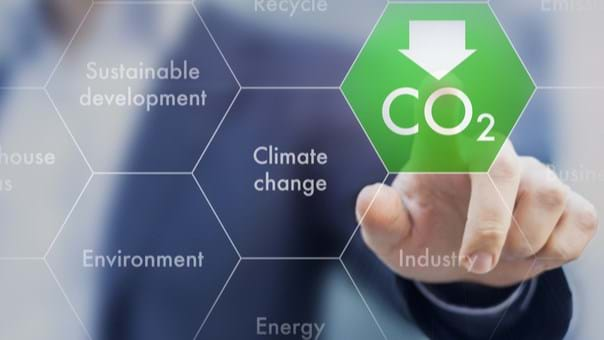An alternative CO2 capture process

SCIENTISTS at the Department of Energy’s Oak Ridge National Laboratory (ORNL), US have developed a simple, alternative process that could be used to remove CO2 from coal-burning power plant emissions. The process requires 24% less energy than industrial benchmark techniques.
Last October UN climate scientists warned that rapid and unprecedented changes are needed in order to limit global temperature rise to 1.5°C above pre-industrial levels. The capture and storage of CO2 released from fossil fuel emissions could help to limit this increase, but it requires the development and large-scale deployment of energy-efficient carbon capture technologies.
The team at ORNL developed a CO2 scrubber after “rediscovering” a class of organic compounds called bis-iminoguanidines (BIGs). BIGs were recently noted for their ability to selectively bind anions, and the researchers realised the ability of BIGs to bind and separate anions could be applied to bicarbonate anions. This led them to develop a CO2-separation cycle which uses an aqueous BIG solution.
In the capture method, flue gas is bubbled through a BIG solution, which causes CO2 molecules to bind to the BIG sorbent. This results in the crystallisation of an insoluble bicarbonate salt. The solid can then be filtered out of solution, and captured CO2 can be released by heating it at 120°C. After release, CO2 could be sent to permanent storage, and the sorbent can be dissolved in water and reused in the process.
State-of-the-art carbon capture technologies have major flaws. Typically, they use liquid sorbents, which can evaporate or decompose over time and require more than 60% of the regeneration energy to be used to heat the sorbent. The developed process avoids these issues as CO2 is captured via crystallisation and is subsequently released from a solid. It does not require heating of a liquid sorbent.
Compared to industrial benchmark sorbents, using the BIG sorbent reduces regeneration energy requirements by 24%. In addition, after ten consecutive CO2 capture-release cycles, researchers only observed a 3% decrease in CO2 absorption capacity.
Radu Custelcean, a Research Scientist at ORNL, said: “The lower energy required for regeneration is expected to significantly reduce the cost of carbon capture, which is critical, considering that billions of tons of CO2 needs to be captured every year to make a measurable impact on the climate.”
However, the BIG sorbent has limited solubility in water, resulting in relatively low CO2 capacity and adsorption rate.
“We are currently addressing these issues by combining the BIG sorbent with traditional sorbents, such as amino acids, to enhance the capacity and absorption rate,” said Custelcean. “We are also adjusting the process so it can be applied to CO2 separation directly from the atmosphere in an energy-efficient and cost-effective way.”
The research is in early stages, but the team believes it will be scalable.
The work was supported by the Department of Energy’s Office of Science.
Chem: http://doi.org/cz8s
Recent Editions
Catch up on the latest news, views and jobs from The Chemical Engineer. Below are the four latest issues. View a wider selection of the archive from within the Magazine section of this site.




